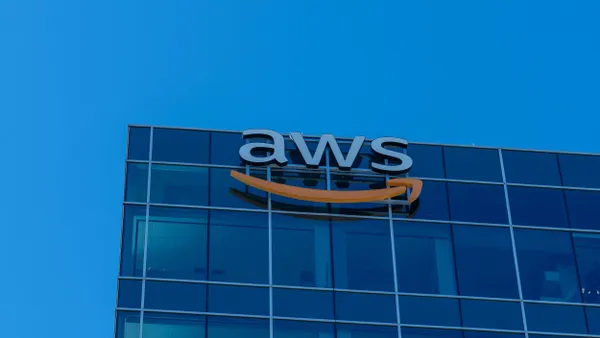Dive Brief:
- AWS will require third-party SaaS to run on AWS infrastructure in order to qualify for commitment-based spending discounts beginning May 1. The hyperscaler informed AWS Marketplace vendors of the change in Q4 2024, Matt Yanchyshyn, VP of AWS Marketplace and partner services, told CIO Dive Tuesday.
- “We're tightening up the Marketplace policy to say: in order to qualify for the discount, you must run 100% on AWS,” Yanchyshyn said. Products that meet the hosting criteria will carry a badge indicating they are eligible for private pricing agreement discounts, he added.
- The change will also expand AWS’ third-party SaaS offerings to solutions not fully hosted by the hyperscaler. “We are now being more explicit about which partner solutions run on AWS and that allows us to do something we have not done before, which is to open the Marketplace to all partner products, regardless of where they're hosted.”
Dive Insight:
Cloud marketplaces serve as a one-stop shop for third-party infrastructure products, professional services and software offerings. These hubs help drive cloud consumption and provide enterprises with an additional way to spend commitment-based discount credits.
“Partner solutions drive substantial AWS service usage so they should count toward your commitment,” Yanchyshyn said, pointing to big-name AWS Marketplace vendors like Salesforce, ServiceNow, Databricks and Snowflake. “The private pricing agreement instrument was designed to reward AWS service users directly and indirectly through those partners.”
Vendor discounts can yield significant savings, cutting some enterprise cloud bills in half, ProsperOps found in research published last year. According to AWS, customers can trim up to 72% of the listed price of its cloud services through commitment-based savings plans.
AWS has been helping Marketplace partners attain compliance with the policy since late last year, Yanchyshyn said.
“A majority of the total customer spend is focused around a relatively small and tractable number of partners, so we’re able to work through those pretty quickly,” he said. “Most of them already run on AWS and, for those that aren’t, we’re working with every single one of them on a migration plan.”















